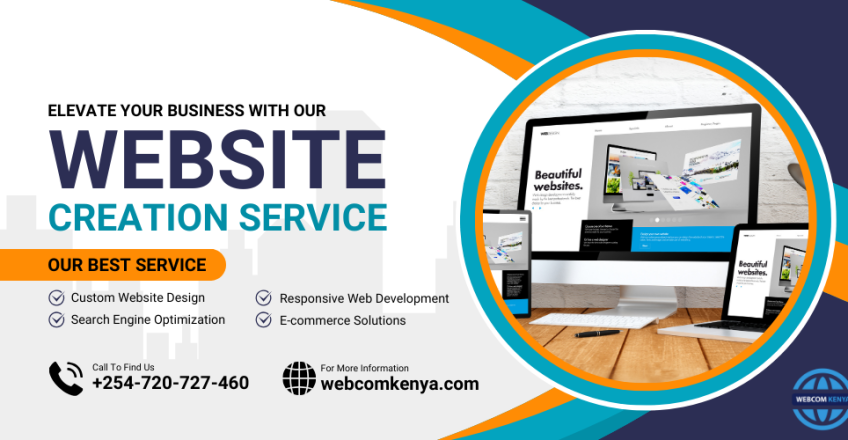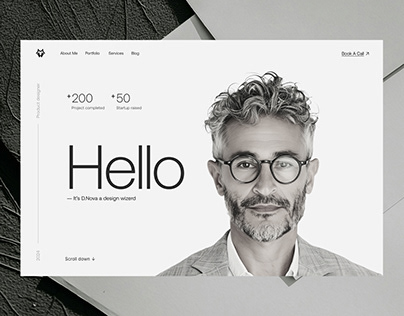The Role of Website Design in Enhancing Brand Identity and Recognition
The Role of Website Design in Enhancing Brand Identity and Recognition
Blog Article
Modern Web Site Layout That Records Interest and Converts
In an increasingly digital landscape, modern web site layout has emerged as a pivotal element in capturing user interest and driving conversions. As we check out these essential parts, it comes to be clear that understanding their interplay can significantly affect an internet site's efficiency and customer satisfaction.
Importance of Visual Hierarchy
Aesthetic pecking order is a critical aspect in internet site style, as it guides customers' interest and boosts their general experience. By strategically arranging content, developers can route individuals to the most essential information initially, thereby enhancing engagement and enhancing use.
Integrating a logical circulation in content plan is necessary; for example, positioning the most critical info on top of a web page promotes instant acknowledgment. Constant usage of typography, such as differing font dimensions and styles, aids establish a clear material structure. This organization not just aids in navigating however also builds trust, as customers feel a lot more comfy when they can conveniently find what they are looking for.
Inevitably, a well-executed aesthetic hierarchy not only boosts aesthetic allure yet also substantially impacts customer actions. By focusing on necessary elements and guaranteeing a seamless experience, developers can effectively convert site visitors into customers, reinforcing the significance of this fundamental layout concept in modern-day internet site growth.
Responsive Design for All Tools
Producing a seamless experience across different tools is important in today's digital landscape, where users access internet sites from tablet computers, desktop computers, and smart devices alike. Receptive style is a crucial technique that makes sure web sites adapt fluidly to various display sizes, orientations, and resolutions. By employing versatile grids, pictures, and CSS media questions, designers can create layouts that maintain aesthetic integrity and capability, no matter the gadget being utilized.
The significance of receptive style extends past visual appeals; it straight impacts customer engagement and conversion prices. A web site that functions well on all gadgets motivates longer gos to and minimizes bounce rates, as customers are most likely to connect with content that is simple to browse. Additionally, online search engine, particularly Google, prioritize mobile-friendly websites in their rankings, making responsive style an essential component of search engine optimization (SEARCH ENGINE OPTIMIZATION)
Incorporating responsive style not only improves customer experience however likewise streamlines the advancement procedure. By developing a single website that works across gadgets, companies can save time and sources contrasted to developing separate mobile and desktop variations. Ultimately, responsive design is an essential method for modern website design, making certain availability and fulfillment for all customers, no matter their device.
Involving Interactive Elements
While a receptive style prepares for a functional internet site, integrating engaging interactive elements is important for catching user attention and fostering much deeper links. Website Design. Interactive elements, such as animations, quizzes, and clickable infographics, produce a much more dynamic individual experience, encouraging visitors to invest more time on the site
Incorporating interactive attributes can additionally guide customers with facility details, making it much easier to digest material. As an example, interactive sliders can illustrate item variants, while embedded video clips can give demos or reviews that resonate greater than static pictures or message. Additionally, gamification strategies, like rewards for Get More Information involving or finishing tasks with web content, can improve user motivation and retention.
Efficient usage of interactive elements not only enhances the individual experience however can likewise lead to greater conversion prices. It is vital to stabilize interactivity with efficiency; extremely complex features may hinder site speed, negatively impacting customer satisfaction.
Structured Navigation Practices
Effective navigation is a cornerstone of any effective site, as it directly influences customer experience and web content availability. Streamlined navigation methods ensure that users can easily situate info, enhancing their communication with the website. A well-structured navigation menu should be basic and instinctive, normally featuring a restricted variety of primary groups to prevent overwhelming site visitors.
To achieve streamlined navigation, developers must prioritize a hierarchical structure that rationally organizes content. Implementing breadcrumb routes can provide individuals with context about their existing location within the site, permitting seamless backtracking. In addition, making use of drop-down menus can efficiently preserve room while still offering accessibility to subcategories.
Receptive style is crucial, as navigating must be practical across all tools (Website Design). Mobile individuals, particularly, advantage from touch-friendly menus and retractable areas that maintain functionality without jeopardizing appearances

Effective Call-to-Action Approaches
A well-crafted call-to-action (CTA) is essential for assisting individuals towards preferred end results on an internet site, as it urges them to engage with content or purchase. To maximize their effectiveness, CTAs must be clear, compelling, and strategically placed throughout the site.
First, use action-oriented language that interacts seriousness or value, such useful source as "Start," "Join Currently," or "Case Your Discount." This language not just motivates users but also sets clear expectations about the next actions.
Second, take into consideration design components; CTAs need to stand apart visually with contrasting shades, enough whitespace, and prominent positioning. A button that is very easy to see and click increases the probability of customer interaction.
In addition, customizing CTAs based upon customer habits or demographics can substantially enhance engagement. Tailored messages resonate more with individuals, driving greater conversion prices.

Final Thought
To conclude, modern web site layout highlights the integration of aesthetic hierarchy, receptive layouts, involving interactive components, structured navigating, and reliable call-to-action strategies. These elements jointly enhance individual experience, making certain that visitors click over here now remain engaged and inspired to check out content additionally. By prioritizing these layout principles, companies can substantially enhance customer retention and conversion rates, ultimately resulting in higher success in the electronic landscape. The continuous development of website design highlights its vital function in reliable online interaction and advertising.
In a progressively digital landscape, modern web site design has actually arised as an essential element in catching individual attention and driving conversions.Aesthetic power structure is an important element in website layout, as it overviews individuals' attention and boosts their general experience.The significance of responsive design expands beyond aesthetics; it straight affects customer involvement and conversion rates.Incorporating receptive design not just enhances user experience yet additionally simplifies the development process. Eventually, responsive style is a basic method for modern internet site design, ensuring availability and fulfillment for all users, regardless of their gadget.
Report this page